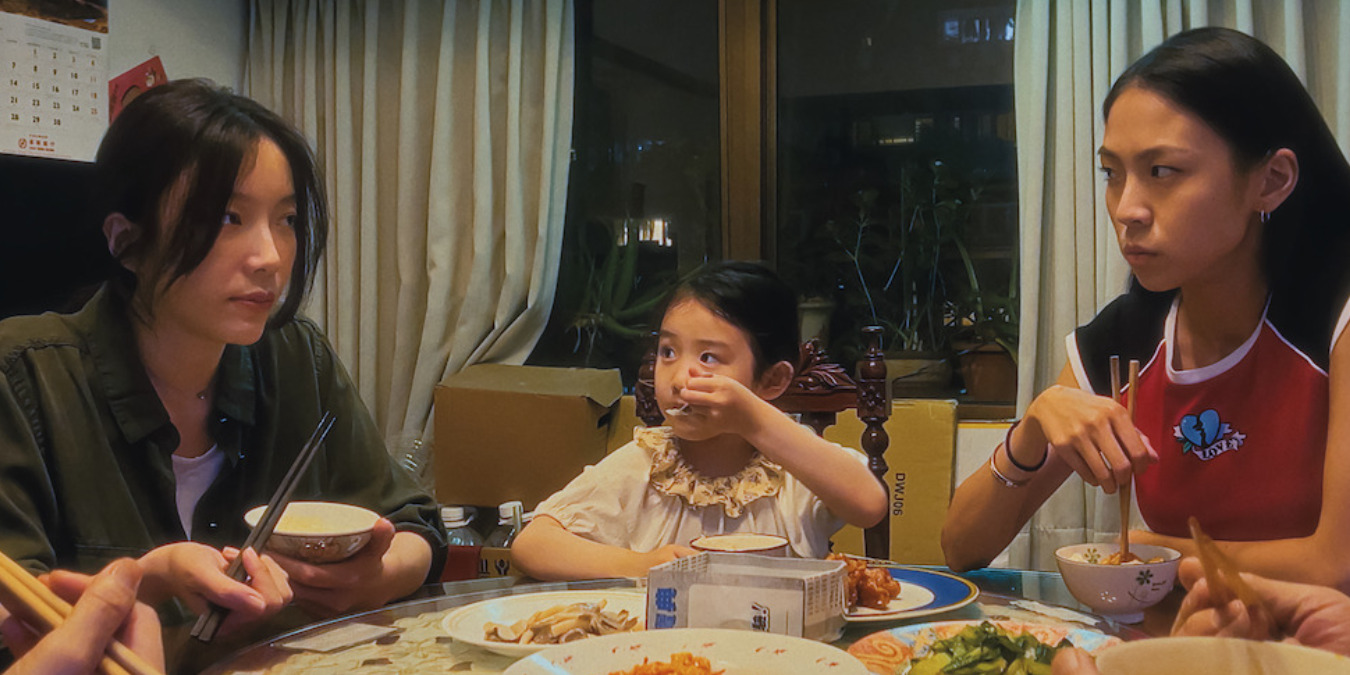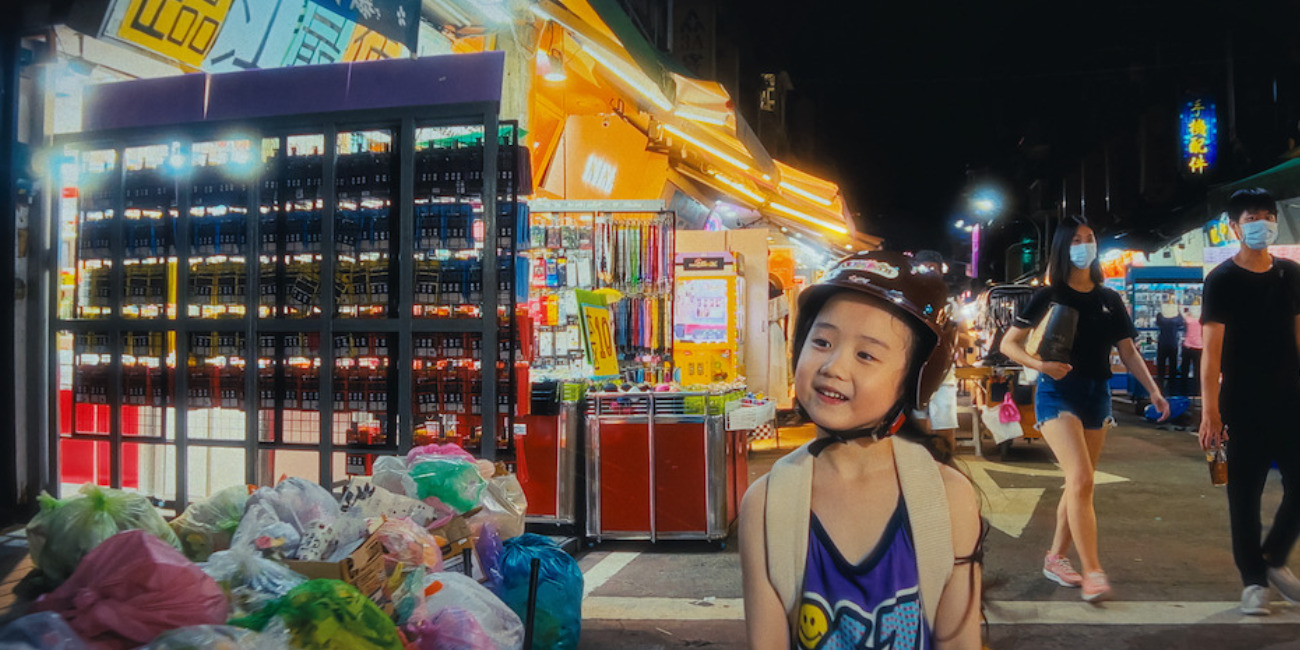Directed by Shih-Ching Tsou, ‘Left-Handed Girl’ (Originally titled ‘Zuopiezi nuhai’) is a moving Mandarin film about a mother and her two daughters as they step into a new chapter of their lives. Shu-Fen makes the move from the quiet countryside to Taipei as a single mother to two young girls, young I-Jing, and I-Ann, who is on the cusp of young adulthood. The family opens up a noodle stall in the city’s busiest night market, while the older daughter finds work on her own. As the family adjusts to their new environment, I-Jing learns some disturbing superstitions from her grandfather, who tries to dissuade her from using her left hand as the dominant one.
Consequently, as I-Jing begins to form negative associations with her southpawed nature, paving the way for a change in her behavior. This leads to some complications that inevitably unravel an entire world of hidden family secrets and suppressed trauma. The intimate story surrounding the lives of three generations of women in the same family presents a deeply authentic and resonant narrative.
Shih-Ching Tsou’s Personal Life Inspired the Narrative of Left-Handed Girl
Although ‘Left-Handed Girl’ is not a biographical film, the story finds significant roots in real life. Director/co-writer Shih-Ching Tsou’s own experiences as a young left-handed girl growing up in Taiwan served as a direct inspiration for the inception of I-Jing’s character and her largely relatable storyline. Growing up left-handed in Taiwan, Tsou faced some old-fashioned prejudice regarding her left-handed nature. In high school, her grandfather told her that “the left hand is the devil’s hand,” and discouraged her from using it. Furthermore, she was “corrected” or forced into handedness conversion at an early age. Although she continues using her left-handedness in her adult life, the experience and memory of that challenging time stayed with her.

In a conversation with Tudum, Tsou spoke about it and said, “That moment (interaction between the filmmaker and her grandfather) stayed with me, not just as a memory, but as a feeling, a quiet shame I carried without fully understanding why.” As a result, the filmmaker had the idea of cinematically telling a story, hinging upon the premise of a young Taiwanese girl who is left-handed for a long time. In fact, when she first met Academy Award-winning filmmaker and her now-frequent collaborator, Sean Baker, this was one of the first story ideas she ever pitched him. Baker was instantly interested in the idea and took a trip with Tsou to Taiwan, where the latter showed him around the country’s night market. The location further caught the ‘The Florida Project’ director’s eye, inspiring the filmmaking duo to create something authentic to the location and the Tsou’s experiences.
Nonetheless, this initially seemed impossible in the late 2000s to early 2010s, since Baker and Tsou couldn’t find a viable way to finance the idea. Still, the idea stuck around for both filmmakers until they were finally able to begin making it a reality in 2022. While Tsuo decided to direct and co-write the project, Baker became the co-writer, executive producer, and editor on the project. Interestingly enough, after Tsou cast Nina Ye for the titular role of I-Jing, she discovered that the child actress was also left-handed but had been corrected by her grandmother. Eventually, as Ye retrained her left-handedness for the role, her family also decided to stop pushing handed conversion on the young actress. As a result, the story’s protagonist character and her foundational experiences as a young left-handed individual retain a significant basis in real life.
Left-Handed Girl Focuses on the Intricate Reality of Nuanced Family Dynamics
While I-Jing’s left-handedness remains a crucial part of her characterization and her narrative journey, her film is defined by several other thematic beats. One of the most instrumental and relatable aspects of the storylines stems from the interpersonal familial relationships between Shu-Fen, I-Jing, I-Ann, and their extended family. For this facet of the tale, Shih-Ching Tsou also drew on real-life inspiration. She found notable inspiration from her own upbringing in Taiwan, where she felt confined by traditions and expectations that were only exacerbated by her identity as a young girl. However, instead of just her personal experiences, Tsou also drew on stories and anecdotes that she had heard from others.

The filmmaker spoke about the same with Tudum. Tsou said, As (Sean Baker and I) developed ‘Left-Handed Girl,’ I began collecting stories — some from friends, some from family, and even from strangers. I was drawn to the tension within traditional families — how fear of judgment or rejection by society can lead to secrets being buried for years. How tradition, even with good intentions, can silence individuality. (‘Left-Handed Girl’) became a way to explore how generational beliefs shape us, and how girls like I-Jing try to carve out an identity in the spaces between love and control.” Thus, even though the Cheng family isn’t directly based on any real-life individuals, their narratives and mother-daughter dynamics remain shaped by realistic and authentic experiences.
Left-Handed Girl Remains Authentic in Its Portrayal of Taiwan
One of the most foundational aspects of ‘Left-Handed Girl’ stems from its commitment to capturing an authentic portrayal of the characters and their local environment. Shih-Ching Tsou’s childhood upbringing in the country played a notable role in achieving this level of realism for the on-screen narrative. Additionally, the filmmaker took things a step further by employing real-life locations, including cramped apartments, real alleyways, and working night markets, for the film’s backdrop.

In order to ensure that filming could be possible in such small and authentic locations, Tsou only formed a five-person crew on set. As a result, this more intimate and personalized approach to filming allowed for the actors and other creatives on set to foster a more authentic experience for the film. Therefore, several of the narrative threads and visual storytelling naturally possess an authenticity that heightens the realities of the characters’ on-screen experiences. Ultimately, this decision to remain realistic in the portrayal of everyday life in Taipei becomes another notable contributor toward presenting a relatable and resonant story.
Read More: Is Regretting You Based on a True Story?


You must be logged in to post a comment.